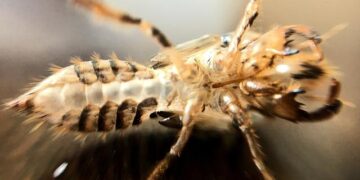The Debate on Managing Invasive Species: Should Intervention Be Our Choice or Is Natural Balance Sufficient?
Understanding Invasive Species
Invasive species are organisms introduced into habitats outside their native range, often leading to significant ecological disruption. These species can overpower local flora and fauna, affecting biodiversity and altering ecosystem processes. For instance, the introduction of the zebra mussel in North America has had severe implications for both aquatic environments and local economies.
The Argument for Intervention
Proponents of active intervention argue that taking steps to control or eliminate invasive species is essential for protecting native ecosystems. They contend that these actions help restore balance in habitats where local species struggle against invasive competition. A recent study indicated that approximately 42% of endangered terrestrial vertebrates face threats from invasive organisms, underscoring the urgency of active management strategies.
Strategies for Structured Control
Methods such as biocontrol—employing natural predators—or physical removal are commonplace practices advocated by ecologists. An example includes using a specialized beetle to manage purple loosestrife populations without harming native plants—illustrating a balanced approach toward mitigation efforts.
The Case Against Human Interference
Conversely, some experts caution against heavy-handed management techniques, positing that nature has its own mechanisms for resolving ecological imbalances over time. They suggest a hands-off methodology might allow ecosystems to adapt naturally—an approach supported by instances like the resurgence of certain predator populations in response to changes in prey dynamics without human involvement.
Alternative Perspectives on Biodiversity
This perspective emphasizes resilience—the ability of ecosystems to recover from disturbances—even when faced with invasives. Recent observations reveal that diverse ecosystems exhibit higher resistance and adaptability than monocultures prone to invasions, advocating for preservation rather than intervention as a suitable solution.
A Balanced Approach: Incorporating Both Views
Striking a balance between interventions and letting nature run its course may yield optimal outcomes in managing invasive species dilemmas. Integrated approaches could involve monitoring strategies where human action complements natural processes rather than obstructs them entirely. Emphasizing coexistence through awareness is essential; public education campaigns about preventing accidental introductions can empower communities toward sustainable practices.
Engaging Local Communities
Engaging local stakeholders plays a critical role as well—encouraging responsible behaviors while cultivating community stewardship helps mitigate further risks associated with invasives. Initiatives aimed at promoting biodiversity protection often lead towards widespread public support when people view themselves as part of the solution rather than victims facing existential threats from non-native species.
Conclusion: Finding Common Ground
The conversation surrounding whether we should actively intervene or adopt a wait-and-see stance regarding invasive species is complex with no simple conclusion just yet. Both sides present valid arguments shaped by empirical evidence and philosophical beliefs about humanity’s role within nature’s intricate web involved directly or indirectly influencing myriad biological interactions worldwide today—and going forward into an uncertain future where climate change will dramatically reshape many established paradigms now known all too well! Thus pursuing collaborative solutions warrants further exploration reflecting ongoing dialogues toward maintaining ecological integrity efficiently whilst preventing crises due recklessly unchecked introductions foreign life forms into delicate landscapes globally overall!






























